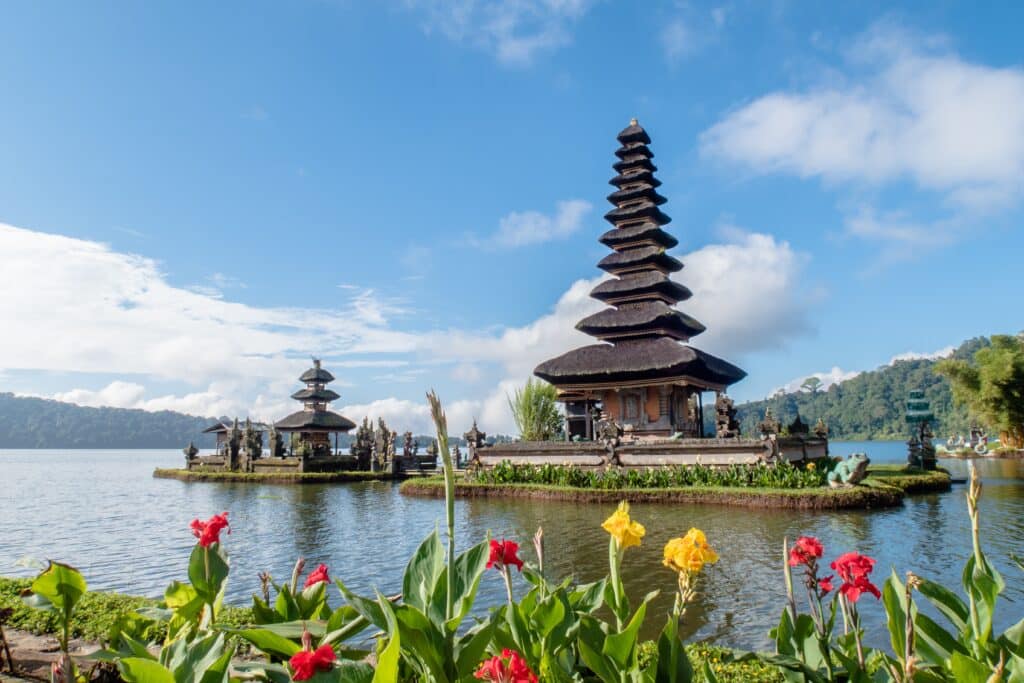Bali is the most western of the Lesser Sunda Islands and a province of Indonesia. From the 1980s on, it experienced a surge in international tourism to the point where it has become Indonesia’s #1 tourist destination.
Curious about Bali or planning a trip? In this article, we’re going to cover some fantastic Bali facts that any world traveler should know.
1. Bali has four islands
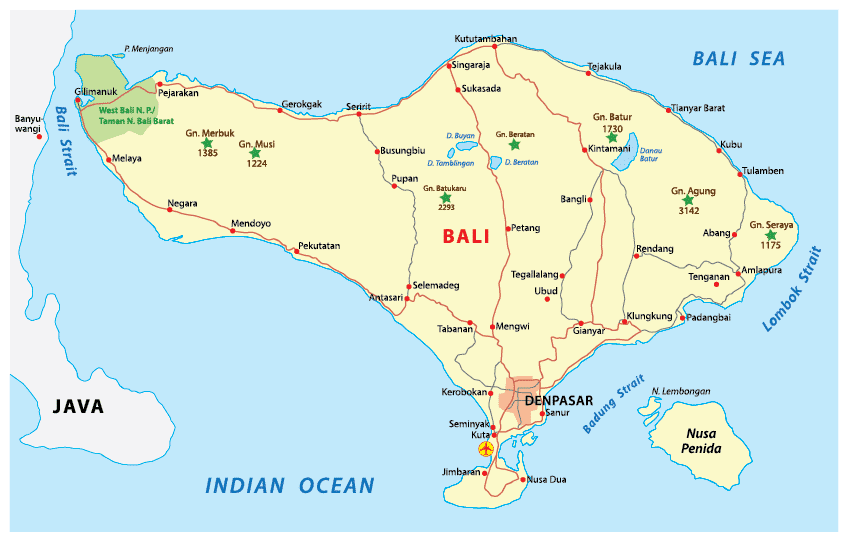
Though Bali’s largest island in the province is called Bali, it is composed of four separate islands. These islands are Nusa Lembongan, Nusa Penida, and Nusa Ceningan. They’re a cluster of islands a short boat ride away. Tourism isn’t as widespread there but is beginning to take off.
Bali itself is enormous. When you think of an island, you typically think of something that you can cross in a short drive, but not Bali. It is 2,200 square miles and would take you days to circle it by car.
2. There are only two seasons
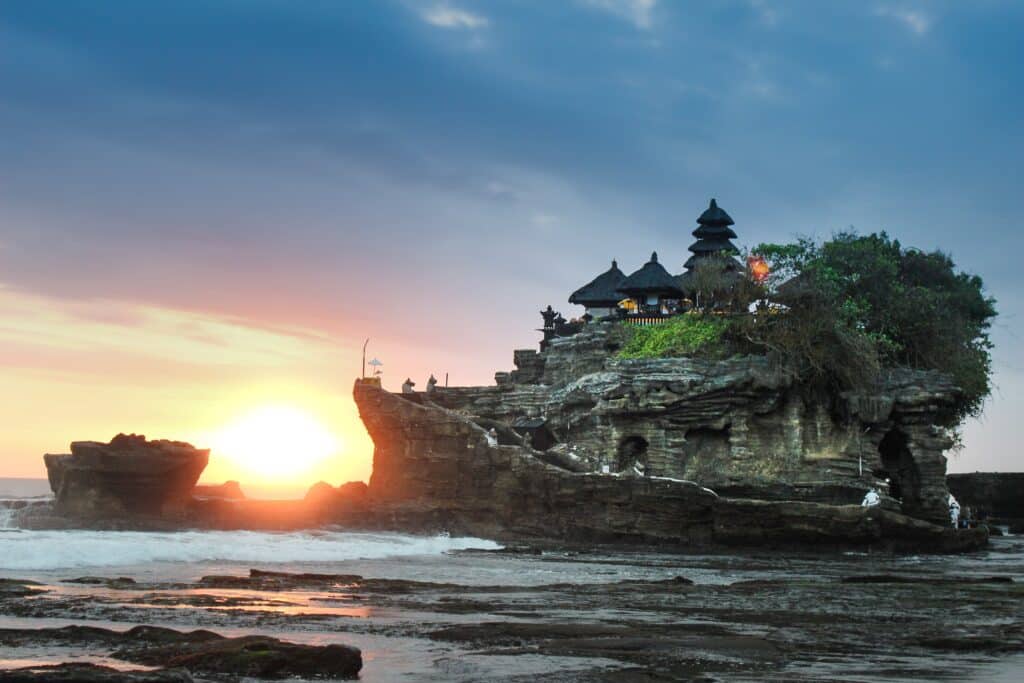
You’ll only find two seasons in Bali, wet and dry. From May to September, you’ll see sunny skies and little rain in the dry season. Between October and April, things get very rainy, with significant storms mixed in. This isn’t unique to Bali, as most tropical destinations only really have two seasons, but it’s something to consider if you’re planning a trip!
3. Bali sits in the Coral Triangle
Bali sits in the southwest part of the Coral Triangle, alternatively called the “Amazon of the seas.” Though it only covers 1.6% of the ocean, it contains over 75% of the ocean’s coral species and over half of coral fish species. To put things in context, only 8% of coral species on Earth are in the Caribbean.
4. Bali is mainly Hindu
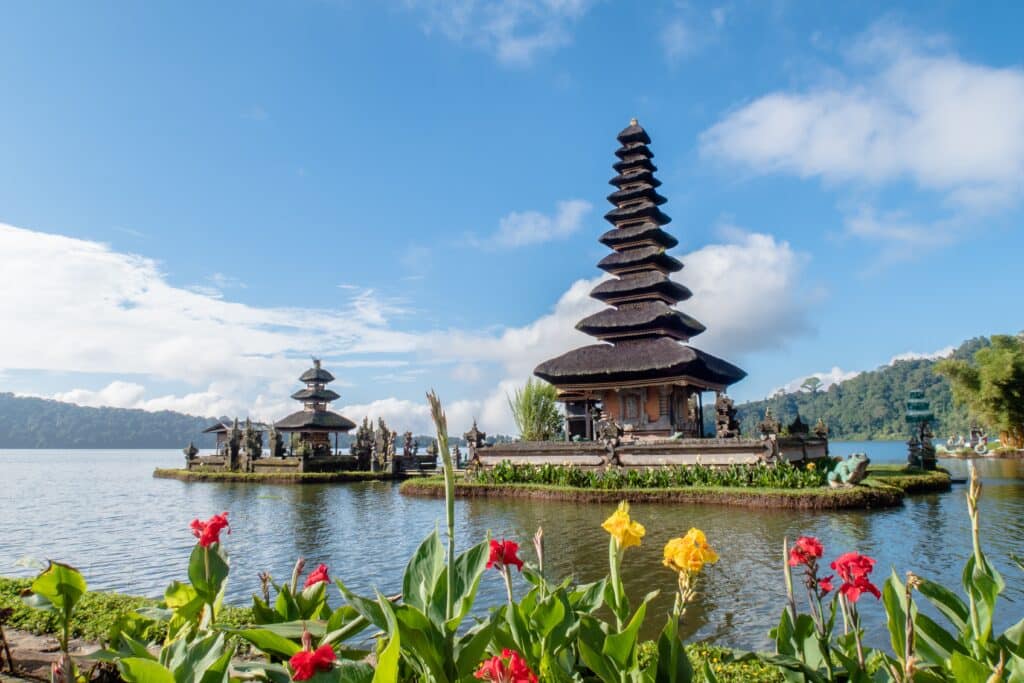
Indonesia is predominantly Muslim, but Bali is mostly Hindu. 84% of Bali’s population is Hindu, which means you can see all kinds of Hindu temples, offerings, and decorations as you travel around the island.
One of the most amazing is the Garuda Wisnu Statue. Unveiled in 2018 after twenty years of construction, the Garuda Wisnu is 396 feet tall, making it the world’s largest Hindu statue! In comparison, the Statue of Liberty is 306 feet tall, so needless to say, it’s awe-inspiring. The statue depicts Lord Vishnu riding Garuda and can be seen from all over the island.
Similar to how India practices Hindusim, Bali also has a caste system. Bali’s caste system is much less strict than India’s. There are no “untouchables,” and members of different casts socialize freely. Still, that amount of respect one receives from the get-go relates to their caste.
5. Only a few Balinese names
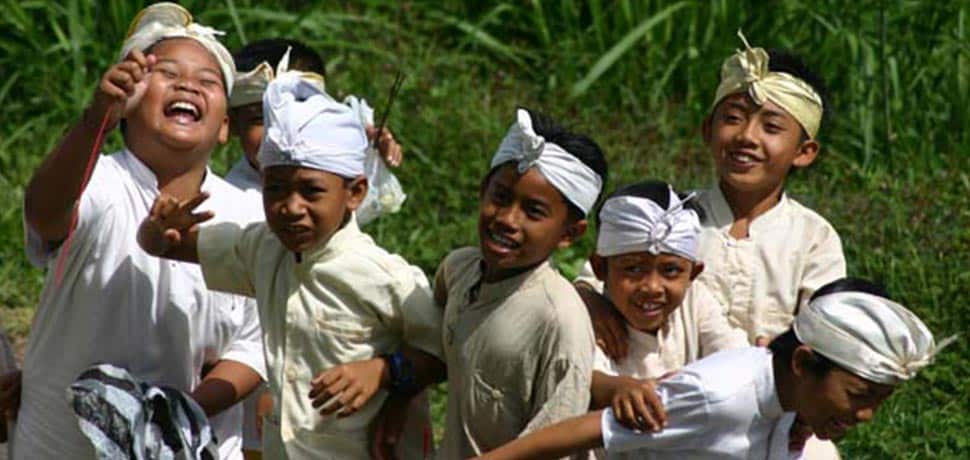
When you’re in Bali, you’ll notice something strange. A lot of people seem to have the same names. This is because there are only four names in Balinese culture: Wayan, Made, Nyoman, and Ketut. Parents know the name of their children years before they even have them!
The names correspond to the birth position. Wayan is the firstborn, Made is second, Nyoman is third, and Ketut is fourth. What happens when they have more than four children? The fifth is called Wayan, and the cycle begins again!
6. The language of Bali
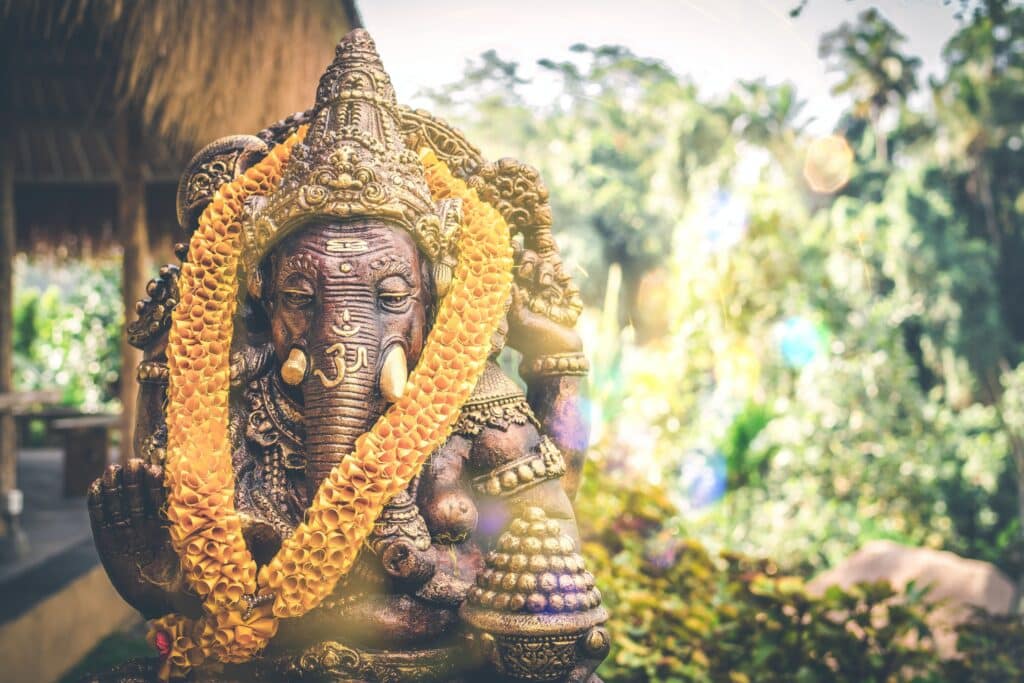
Because Indonesia is so diverse, there are over 580 languages and up to 1,200 different dialects. The official language is Bahasa Indonesia, which is similar to Malay. Despite most people speaking Bahasa, there’s a strong movement to keep Balinese, Bali’s native language, alive.
Don’t worry if you don’t speaker either – because Bali is such a tourist hot spot, English ist he most common third language. Those who work in the industry often need to speak enough English to communicate with tourists.
7. Babies and children
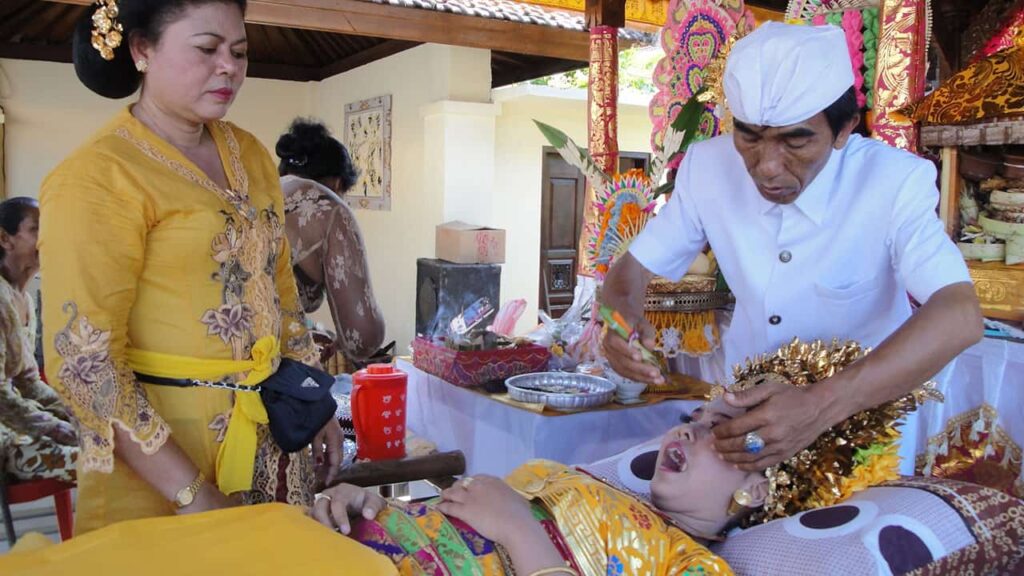
One thing you might notice is that Balinese parents carry their babies everywhere. There are strict rules that don’t allow babies to touch the ground before their three months old.
When children get older, they undergo teeth filing ceremony. By having their teeth filed, they’re symbolically “cut down” on the negative human traits like wrath, greed, lust, jealousy, and intoxication. For many, this signifies the transition from childhood to adulthood.
8. A day of silence every year
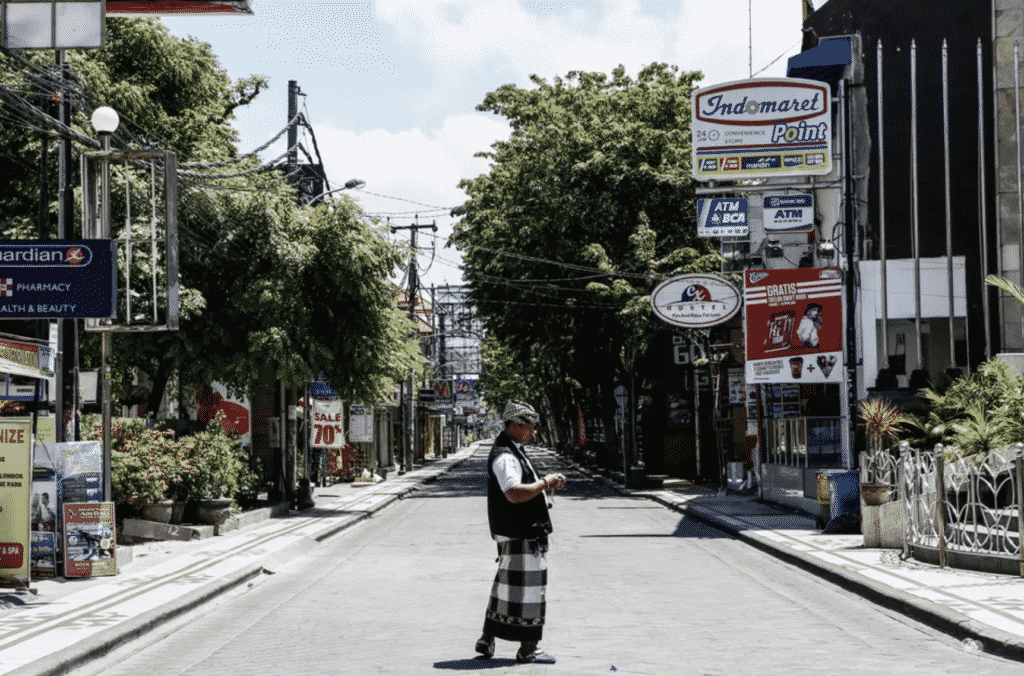
Nyepi is a Hindu celebration celebrated in Bali. It’s a “Day of Silence” every new year observed from 6 am to 6 am the next day. Nobody works; they keep light and noise to a minimum, and the streets are empty. Not even flights are allowed to land on the island.
Bali doesn’t force tourists to participate, though they’re not exempt from the restrictions. You’ll find yourself stuck in your hotel, unable to visit the beaches, or even walk the streets during Nyepi.
9. Attack of Arak
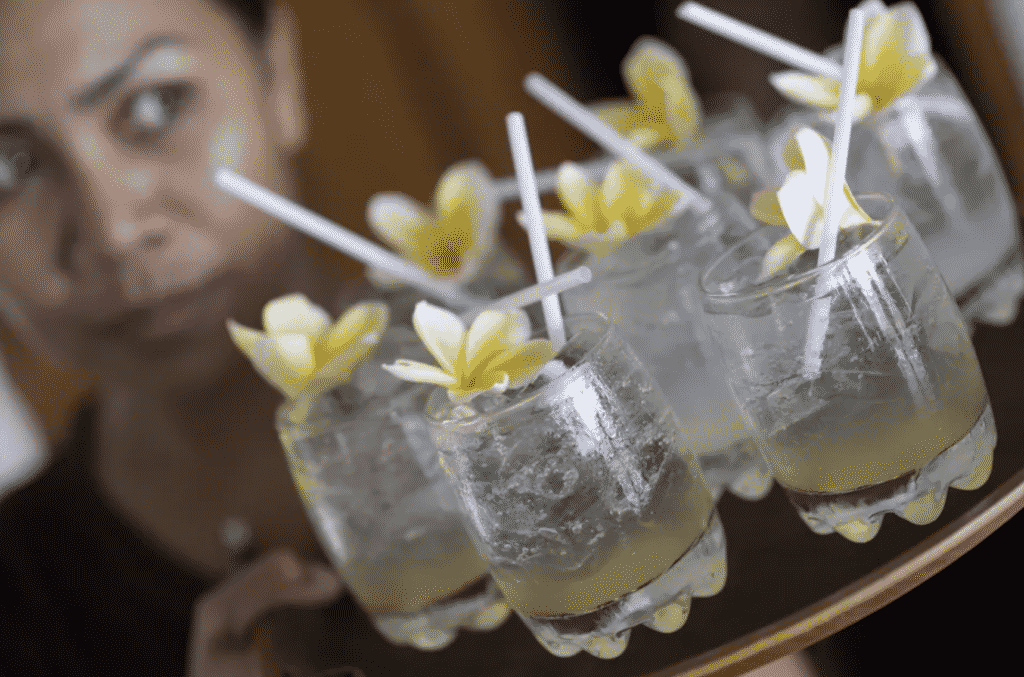
Arak is an Arabic word that has become a generic term for spirits around the world. In Indonesia, and also Malaysia, Arak is the equivalent of moonshine in the United States. Much like its stateside cousin, Arak is responsible for multiple local and tourist deaths in Bali. An estimated ten to twenty people die in Indonesia every day from Methanol poisoning related to Arak.
Strict laws and high alcohol taxes in Indonesia make alcohol challenging to acquire, stimulating the bootleg market. As a result, many bars and restaurants will buy Arak.
Your best bet is to avoid consuming Arak. You can do so by:
- Drinking only beer or wine
- Avoiding cocktails with clear spirits
- Don’t take free drinks
- Ask if it contains Arak (though some may lie)
- Drink out of bottles that you open.
10. The Ring of Fire
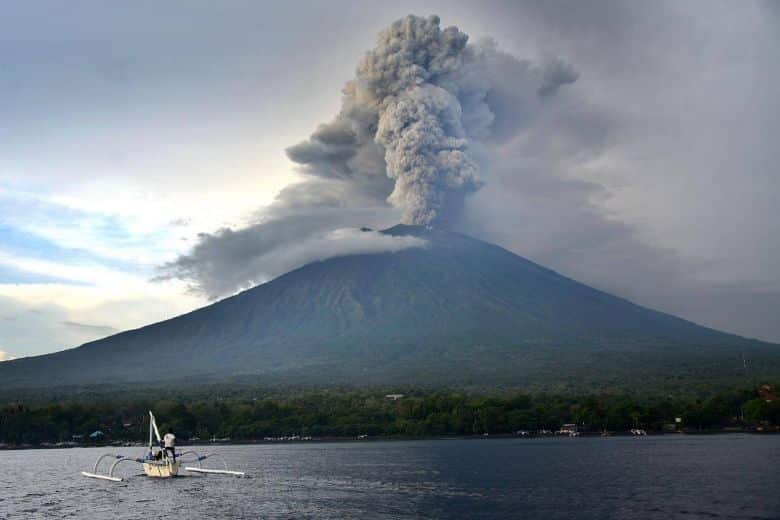
Bali sits directly on the Ring of Fire, a horseshoe sized region containing 75% of the Earth’s volcanos. There are two active volcanos, Mount Agung and Mount Batur, that tower over Bali.
Balinese consider Mount Agung a sacred spot. It’s believed that it is a replica of Mount Meru, the center of the universe. It erupted in November 2018 and still makes its presence felt throughout the year.
A bonus of being near active volcanos are the natural hot springs you can find dotted around Bali. Locals tend to keep these hidden, so most tourists have probably never heard of them.
11. Spa island

Can’t find one of its natural hot springs? No worries, there are over 1,200 spas on Bali. They’re even known for Balinese Massage, which is influenced by traditional medicine in China, India, and Southeast Asia. It can include acupressure, skin rolling/flicking, percussion, and essential oils. The combination of aromatherapy and manual therapy helps with relaxation and is supposed to allow blood and qi flow.
The wide variety of spas also allows you to choose how pampered you want to be. You could easily have a quick massage on the beach or get the five-star treatment in a luxury spa at The Sacred River Spa at Four Seasons.
12. Balinese etiquette
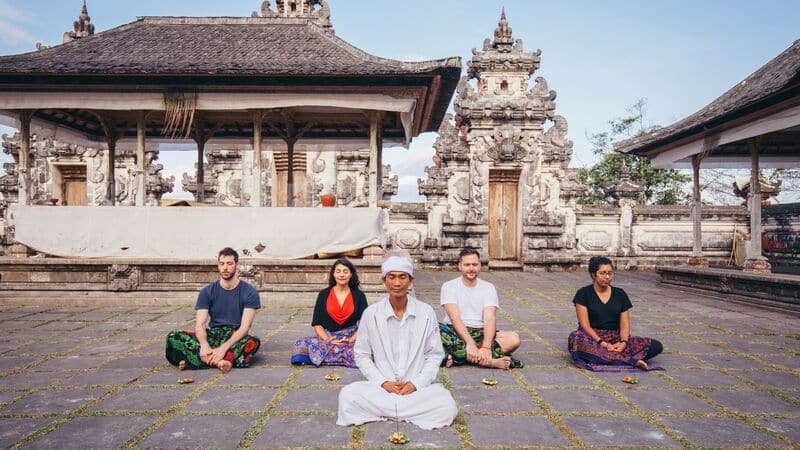
The people of Bali are some of the kindest you’ll ever meet, but there are a few things you should watch out for if you don’t want to offend anyone.
When you eat at a restaurant, feel free to devour your entire plate, but there are different rules in someone’s home. Always leave a little bit of food on your plate to show you’re finished and symbolize an offering to the gods.
You should also not point your feet at anyone. Feet are considered dirty and shouldn’t be used to point at anything. If you’re sitting, make sure your feet don’t rest above your knee.
For those who don’t know this is rude almost anywhere, never touch someone’s head. Because the Balinese people believe the soul is in the head, it makes handling it a big no-no, even when it comes to children.
You should follow many other rules, so use your best judgment and maybe consult a more in-depth guide like this.
13. North isn’t always north
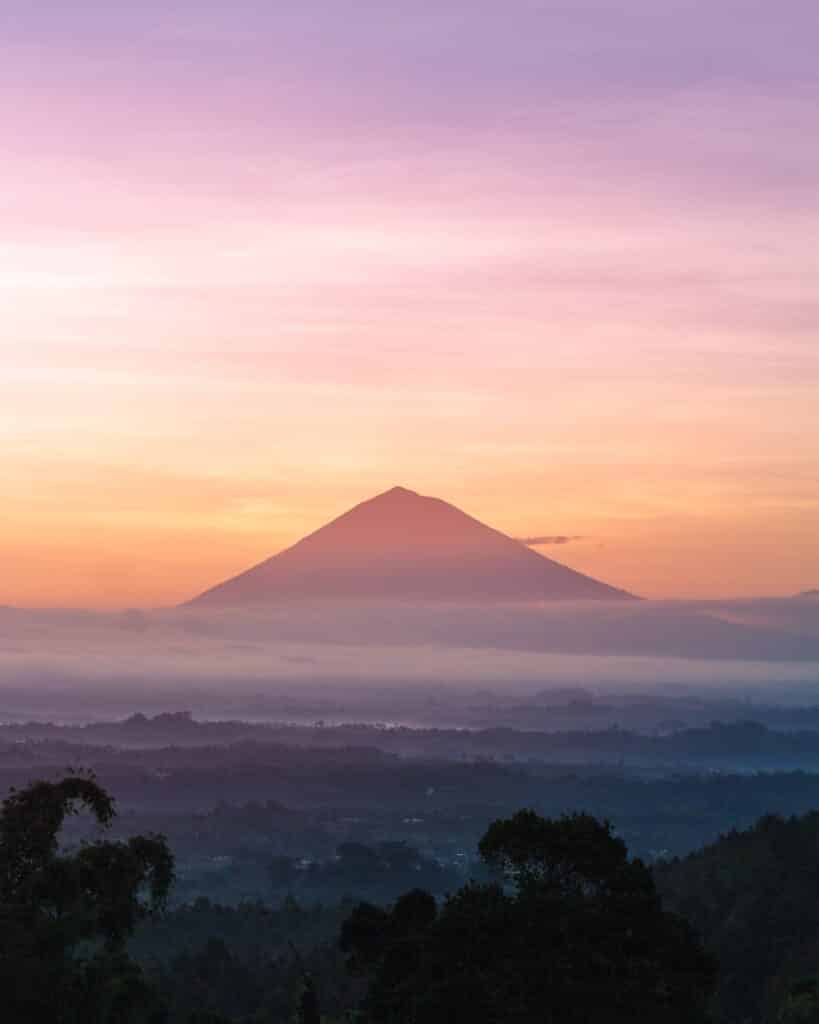
When asking for directions, one thing to keep in mind is to the Balinese, north and up are the same thing – a heaven-like place where good spirits and gods live. High points like Mount Agung are north. Most Balinese houses and temples face north to the mountain.
Where this gets tricky is where you are concerning the mountain. If you’re north of Mount Agung and ask which way is north, locals will point you south towards Mount Agung, which can be confusing.
14. David Bowie and Ngaben
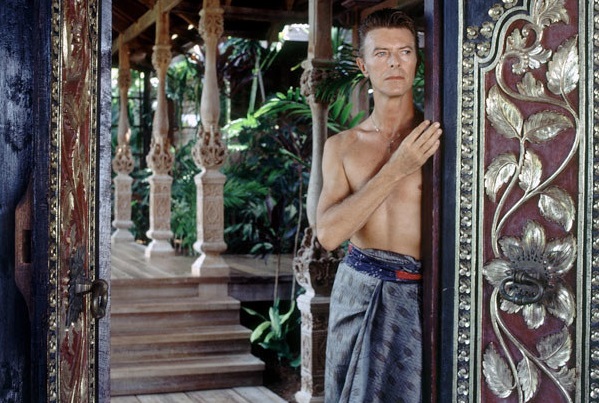
Bali, and Indonesia in general, held a special place in David Bowie’s heart. The song “Tumble and Twirl,” written with Iggy Pop, references their journey exploring Indonesia in the early 80s. Bowie traveled there many more times and even modeled his house on Mustique’s Caribbean island after traditional Java and Bali architecture.
Bowie’s will requested his body get sent to Indonesia where it would be cremated and laid to rest, according to Ngaben, an Indonesian custom. Ngaben is a two-week ceremony where the body is colorfully paraded in an ox-like structure, then cremated. After 12 days, the family throws the ash in the sea, representing paradise in Indonesian culture.
15. Stunningly engineered rice fields
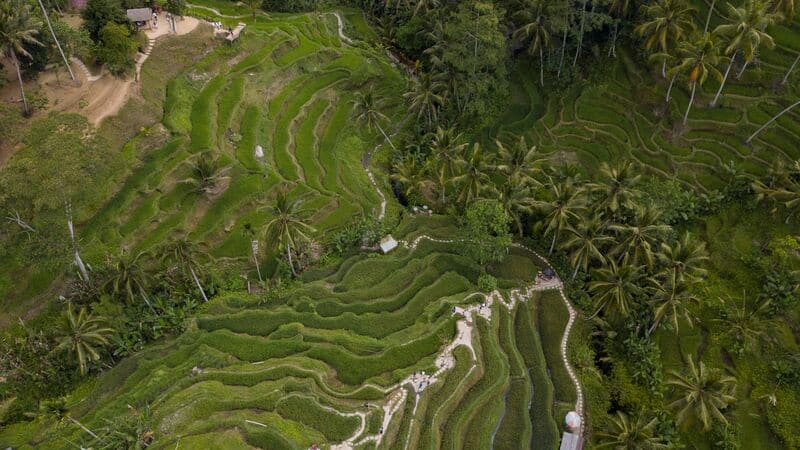
Bali’s rice terraces offer some fantastic views that won’t leave you disappointed. If you visit the island, they are a must-see and will give you a picture of local history and life. Many siphon water from groundwater and redistributes it via canals.
The largest rice field and most famous rice terrace are called Jatiluwih. It sits on the southern side of the Batukaru mountain range and, at one point, was designated a Cultural Heritage site candidate by UNESCO. You can explore the 600 hectares fields by paying a small fee to the local village cooperative fund.
16. Amazing and unique beaches
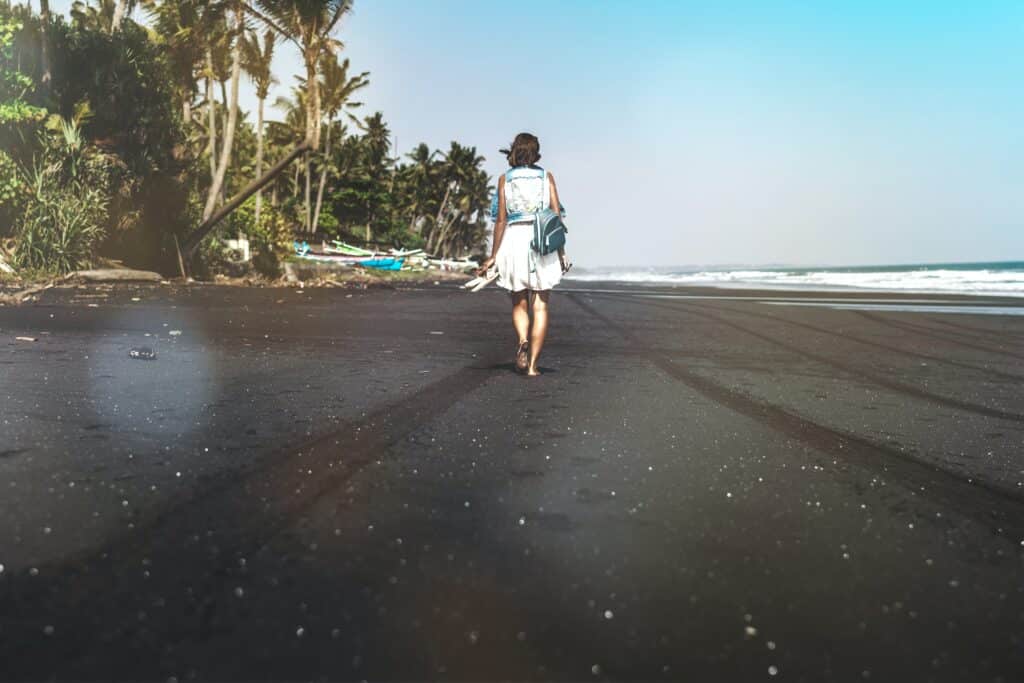
Bali is renowned worldwide for its amazing beaches. To the south, beaches have pristine white sand. To the north and west, there are black sand beaches. This unique phenomenon occurs when lava touches cold ocean water and cools very quickly. It shatters and breaks into small fragments, including black sand. These black sand beaches are most common along the ring of fire.
17. Bali is a vegan destination
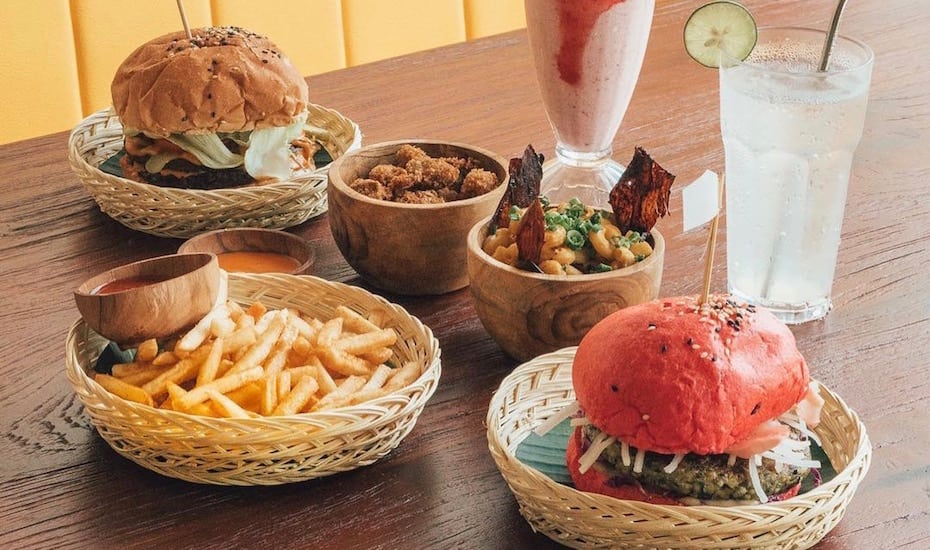
Bali isn’t just known for the beautiful mountains and beaches – it is also extremely vegan friendly. The town of Ubud is the most famous vegan hub and s considered the cultural capital of Bali.
You would be hard-pressed to find anywhere else on Earth with the variety of vegan restaurants that Ubud has. Because of Balinese and Hindu culture, there’s a significant focus on healthy foods like smoothies and raw food. That doesn’t mean you can’t find other options. Ubud has some of the best vegan ice cream, pasta, pizza, burgers, and other foods in the world.
Beyond these foods, traditional Indonesian food is vegan-friendly. Tempeh and tofu are both used heavily in local food. Indonesia even invented Tempeh!
If visiting Ubud, be sure to head to Sage. Their vegan banana bread goes perfectly with a vegan chai coconut latte. If you want healthier food, head to Earth Café Ubud. Their buckwheat pancakes are absolutely out of this world.
18. The world’s most expensive coffee

Indonesia is one of the countries that harvest Kopi Luwak, the most expensive coffee globally – $700 per kilogram in the US. You may know of it by its other name, civet coffee. It consists of partially digested coffee beans that were eaten and defecated by the civet. Civets are cat-like mammals native to Africa and Southeast Asia.
Coffee producers believe that two factors lead to Civet poop creating the best coffee in the world. First, civet’s are discerning when picking coffee cherries, and second, their digest tracts alter them to taste better.
Sadly, traditional methods of collecting feces have given away to factory farming. Civets are kept in cramped cages and force-fed coffee cherries, raising major ethical concerns about their captivity treatment.
19. A year in Bali is only 210 days
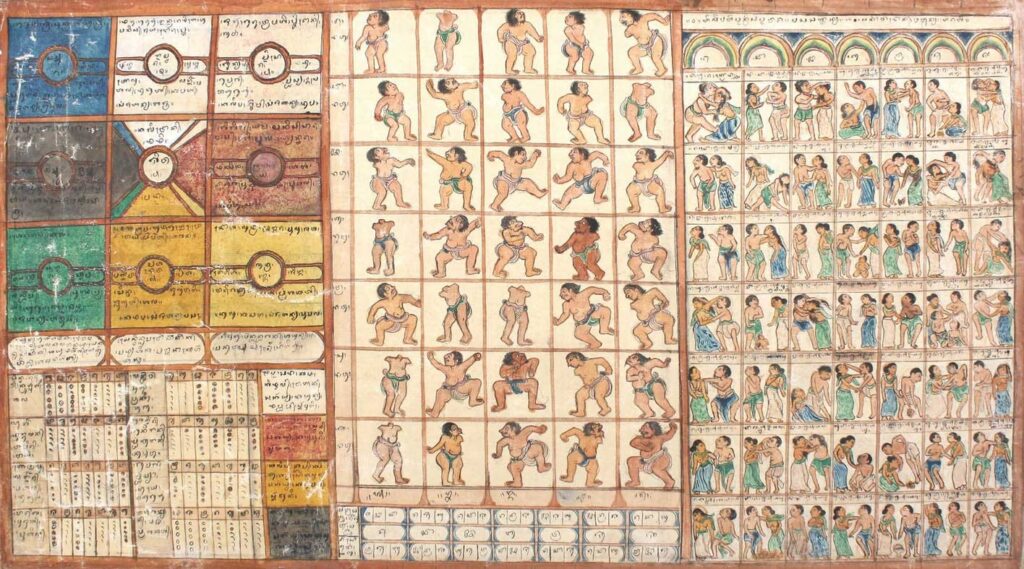
Bali doesn’t use the Gregorian Calendar, but their own Hindu based Calendar called the Pawukon calendar. They split a year ten concurrent weeks that consist of 1, 2 3, 4, 5, 6, 7, 8, 9, and 10 days. You can read more about this exciting system here.
20. Dolphins and Lovina Beach
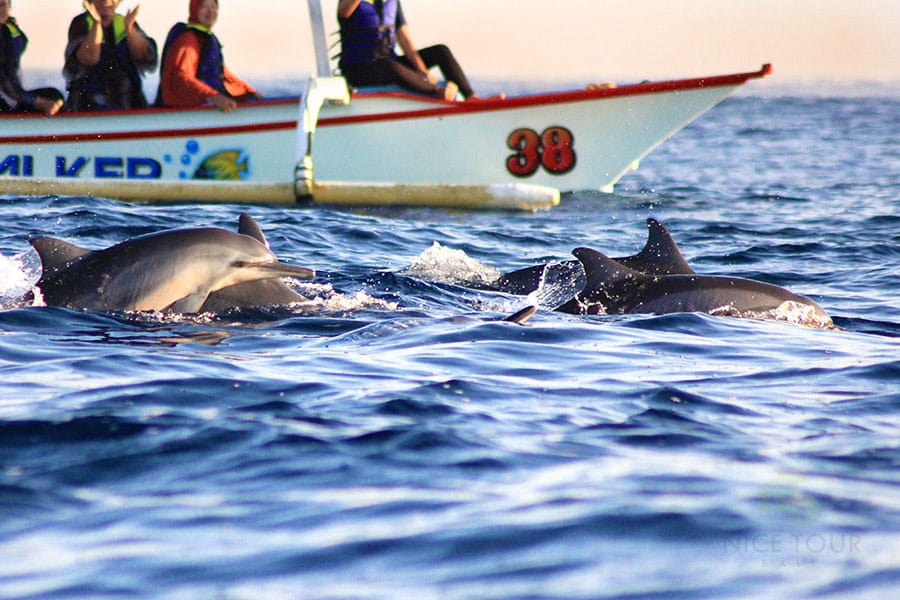
One of the most popular locations on Bali is Lovina Beach in Northern Bali. It is a black sand beach well known for dolphins, swimming, and snorkeling. Unlike the southern Bali, where waves are more tumultuous, the calm waters of Lovina Beach allow tourists to explore coral and swim with dolphins. There are five species of dolphins who make these waters their home, so seeing tourists swimming and interacting with them offshore is common.
21. Bamboo Chocolate Factory
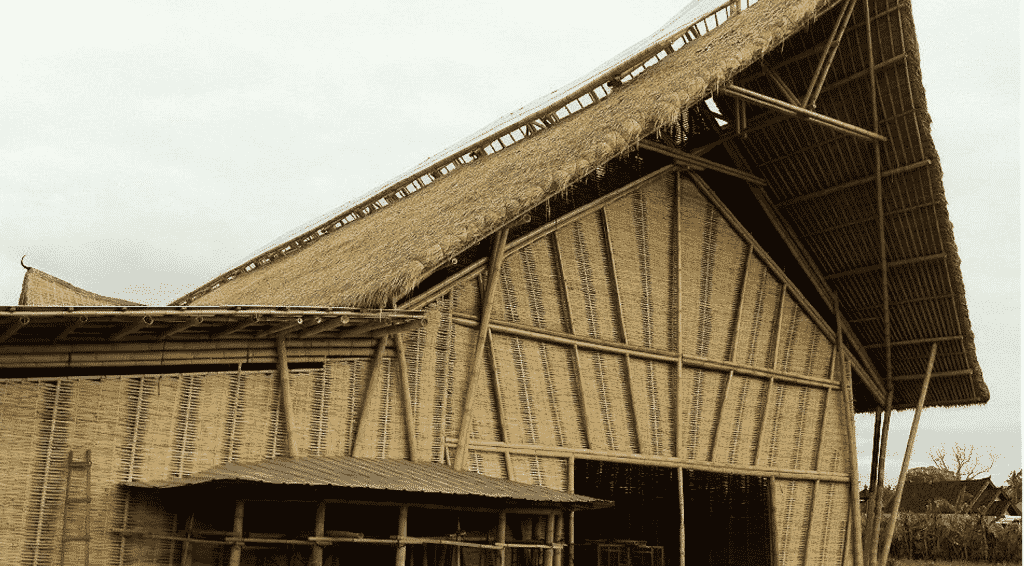
One of Bali’s most novel locations is Big Tree Farms bamboo chocolate factory. Built-in 2011, BTF’s co-CEOs Frederick Schilling and Ben Ripple conceived of this 26,500 square foot building with sustainability in mind. Now you can visit the most massive commercial bamboo structure in the world and try its “bean to bar” chocolate.
22. Bali’s Economy
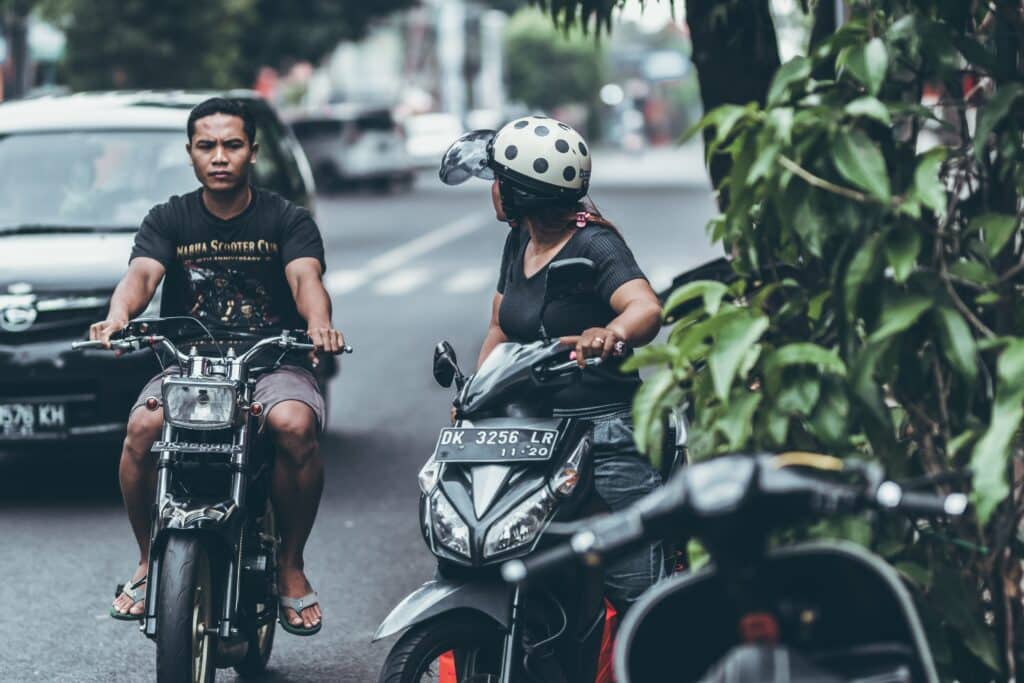
Based on what you’ve read, we’re sure you’ve guessed that tourism is critical to Bali’s economy – around 80%. The remaining 20% is coffee agriculture, as well as small artisan crafting. Bali is also starting to become more of a manufacturing hub for fashion brands like H&M.
COVID-19 hit Bali’s economy particularly hard due to its dependence on tourism. They have declined to allow foreign visitors to the island until 2021 due to Indonesia’s number of cases. Bali has tried to pivot to cater to domestic travel, but a wave of closures has hit the islands. The industry is struggling to find workers, as many who worked in tourism are heading home to smaller villages to fish or work in agriculture.
General Information About Bali
Additional stats and general Bali facts as of 2020:
- Population total: 4,362,000
- Population Density: 2,000/square miles
- Capital City: Denpasar
- Ethnic Groups: 88% Balinese, 7% Javanese, 1% East Indonesians, 1% Baliaga, 1% Madurese
- Religion: 82.5% Hindu, 12.4% muslim, 4.6% Christian, .5% Buddhist
- Total Area: 2,230 square miles
- Time zone: UTC+08 (WITA)
- GDP PPP: $58.39 Billion
- National Flower: Fangipani
- National Dish: Nasi Goreng
- Driving side: left
- Official Website: baliprov.go.id
- Country Code: IDN
- Country Number: +62
We hope you enjoyed these amazing Bali Facts! As the world begins to open up, you should definitely consider traveling to the beautiful islands of Bali.
- Tulip Mania – The Story of One of History’s Worst Financial Bubbles - May 15, 2022
- The True Story of Rapunzel - February 22, 2022
- The Blue Fugates: A Kentucky Family Born with Blue Skin - August 17, 2021
